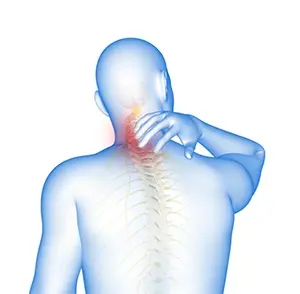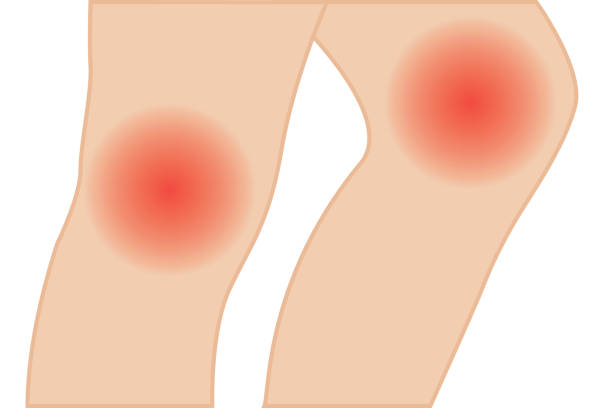



What is cervical spondylosis?
Cervical spondylosis, also referred to as cervical osteoarthritis or neck arthritis, is a common age-related condition impacting the joints and discs in the cervical spine, situated in the neck. The development of this condition arises from the natural wear and tear of cartilage and bones in the neck. Although primarily associated with aging, cervical spondylosis can also be triggered by various other factors.
Studies indicate that this condition is present in more than 90 percent of individuals aged 60 and older. It’s noteworthy that some individuals with cervical spondylosis may remain asymptomatic, experiencing no noticeable symptoms. On the other hand, for some, it can lead to persistent and intense pain as well as stiffness. Despite the potential for chronic discomfort, many individuals with cervical spondylosis are still able to carry out their routine daily activities.
Cervical spondylosis causes
The bones and protective cartilage in your neck are susceptible to the natural process of wear and tear, which can result in the development of cervical spondylosis. Potential causes of this condition are:
Dehydrated spinal discs – Between the bones in your spine, there are cushion-like discs that act as shock absorbers during activities like lifting and twisting. These discs have a gel-like substance inside. As you age, this gel can dry out, leading to the bones in your spine (vertebrae) rubbing against each other more. This increased friction can be painful. This process can start happening in your 30s.
Bone spurs – The extra bone growths happen because the body is trying to make the spine stronger. However, these additional bones can push on sensitive parts of the spine, like the spinal cord and nerves, causing pain.
Injury – If you’ve had an injury to your neck (during a fall or car accident, for example), this can accelerate the aging process.
Herniated discs – The discs in your spine can get little cracks, and the soft material inside them can leak out. This material may push on the spinal cord and nerves, causing symptoms like numbness in the arm and pain that goes down the arm.
Ligament stiffness – The strong cords that link the bones in your spine can become even less flexible as time goes on. This can impact how easily you can move your neck and may make it feel tight.
Overuse – Certain jobs or activities require doing the same movements over and over or lifting heavy things (like in construction work). This extra strain on the spine can lead to it wearing down more quickly.
Risk factors for the condition
The biggest factor that increases the chance of getting cervical spondylosis is getting older. As you age, changes happen in the joints of your neck, leading to the development of cervical spondylosis. Aging can cause disc herniation, dehydration, and the growth of bone spurs.
Factors other than aging can increase your risk of cervical spondylosis. These include:
*Neck injuries
*Work-related activities that put extra strain on your neck from heavy lifting
*Holding your neck in an uncomfortable position for prolonged periods of time or repeating the same neck movements throughout the day (repetitive stress)
*Genetic factors (family history of cervical spondylosis)
*Smoking
*Being overweight and inactive
Symptoms of cervical spondylosis
Many individuals with cervical spondylosis may not experience noticeable symptoms. If symptoms do appear, they can vary in intensity and onset, either developing slowly over time or suddenly.
A frequent symptom is pain near the shoulder blade. Some individuals may report experiencing pain extending along the arm and into the fingers. The pain may intensify when:
*Standing
*Sitting
*Sneezing
*Coughing
*Tilting your neck backward
Another common symptom is muscle weakness, which can make it challenging to lift the arms or grip objects securely.
Additional common indicators include:
*A stiff neck that becomes worse
*Headaches that mostly occur in the back of the head
*Tingling or numbness that mainly affects the shoulders and arms, although it can also occur in the legs
Less common symptoms may involve difficulties with balance and loss of control over bladder or bowel functions. It is crucial to seek prompt medical attention if these symptoms arise.
When to Consult a Physician
If you suddenly feel numb or tingly in your shoulders, arms, or legs, or if you lose control over your bowels or bladder, it’s important to contact your doctor and get medical help right away. This is a serious emergency.
If your pain is getting in the way of your daily activities, it’s a good idea to schedule an appointment with your doctor. If you don’t have a doctor yet, you can use the Healthline FindCare tool to find one in your area.
Even though cervical spondylosis often happens as you get older, there are treatments that can help lessen pain and stiffness.
Conducting Tests and Diagnosing the Condition
Diagnosing cervical spondylosis requires eliminating other possible conditions like fibromyalgia. The process involves evaluating movement and identifying affected nerves, bones, and muscles.
Your doctor might provide treatment or recommend consulting with a specialist, such as an orthopedic specialist, neurologist, or neurosurgeon, for additional tests.
Physical exam
First, your doctor will ask you about your symptoms. After that, they will perform a series of tests.
These tests usually involve checking your reflexes, looking for muscle weakness or changes in feeling, and assessing how well you can move your neck.
Your doctor might also observe how you walk. All of these steps help your doctor figure out if there’s too much pressure on your nerves and spinal cord.
If your doctor thinks you might have cervical spondylosis, they will then request special pictures of your neck and tests to see how well your nerves are working, confirming the diagnosis.
Imaging tests
*X-rays are employed to examine the presence of bone spurs and detect any other abnormalities.
*CT scans offer more detailed images of your neck.
*MRI scans, which use radio waves and a magnetic field, help locate pinched nerves.
*Myelograms involve injecting dye to highlight specific spine areas, with CT scans or X-rays providing detailed images afterward.
*Electromyograms (EMG) assess the normal functioning of your nerves in transmitting signals to your muscles by measuring their electrical activity.
*Nerve conduction studies evaluate the speed and strength of signals sent by nerves. Electrodes are placed on your skin where the nerve is located to perform this test.
Treating cervical spondylosis
Treating cervical spondylosis aims to relieve pain, reduce the risk of lasting damage, and support a regular lifestyle.
Non-surgical approaches are often highly successful.
Physical therapy
Your doctor may recommend physical therapy as part of your treatment. In physical therapy, you’ll do exercises to stretch and strengthen your neck and shoulder muscles, which can help reduce pain.
Another option is neck traction, where weights are used to create more space between the joints in your neck. This helps ease the pressure on the discs and nerves in the neck.
Medications
If over-the-counter drugs don’t help, your doctor may prescribe specific medications, including:
*Muscle relaxants like cyclobenzaprine (Fexmid) for treating muscle spasms.
*Narcotics such as hydrocodone (Norco) for pain relief.
*Anti-epileptic drugs like gabapentin (Neurontin) to alleviate pain caused by nerve damage.
*Steroid injections like prednisone to reduce tissue inflammation and subsequently lessen pain.
*Prescription nonsteroidal anti-inflammatory drugs (NSAIDs) such as diclofenac (Voltaren-XR) to decrease inflammation.
Surgery
In severe cases where other treatments are ineffective, surgery may be necessary. This can include removing bone spurs, sections of neck bones, or herniated discs to create more space for your spinal cord and nerves.
Surgery is seldom needed for cervical spondylosis, but it might be recommended by a doctor if the pain is intense and significantly impacting your ability to move your arms.
Self-Care Options at Home
If your condition is mild, there are a few things you can try at home to alleviate it:
*Take an over-the-counter (OTC) pain reliever like acetaminophen (Tylenol) or a nonsteroidal anti-inflammatory drug (NSAID) such as ibuprofen (Advil) or naproxen sodium (Aleve).
*Apply a heating pad or a cold pack to your neck for pain relief in sore muscles.
*Engage in regular exercise to aid in a faster recovery.
*Consider wearing a soft neck brace or collar for temporary relief. However, it’s essential not to use a neck brace or collar for extended periods as it can weaken your muscles. At Daphco Medical Equipment, we also offer cervical braces which provides support and alleviate the pain in your neck. You can visit our store by clicking this link or if you’re a Medicare beneficiary, you can fill out this contact form to get further information on how to get braces covered by your insurance.
Outlook for cervical spondylosis
Cervical spondylosis is a prevalent, frequently age-related condition that may result in stiffness, discomfort, and headaches associated with neck pain.
While your doctor may not be able to completely reverse the condition, they can often suggest conservative treatments to alleviate the discomfort and pain.
Search Articles
Latest Articles
28th Feb, 24
23rd Feb, 24
20th Feb, 24
15th Feb, 24
13th Feb, 24



 888-616-4156
888-616-4156 


 28th Feb, 24
28th Feb, 24 


